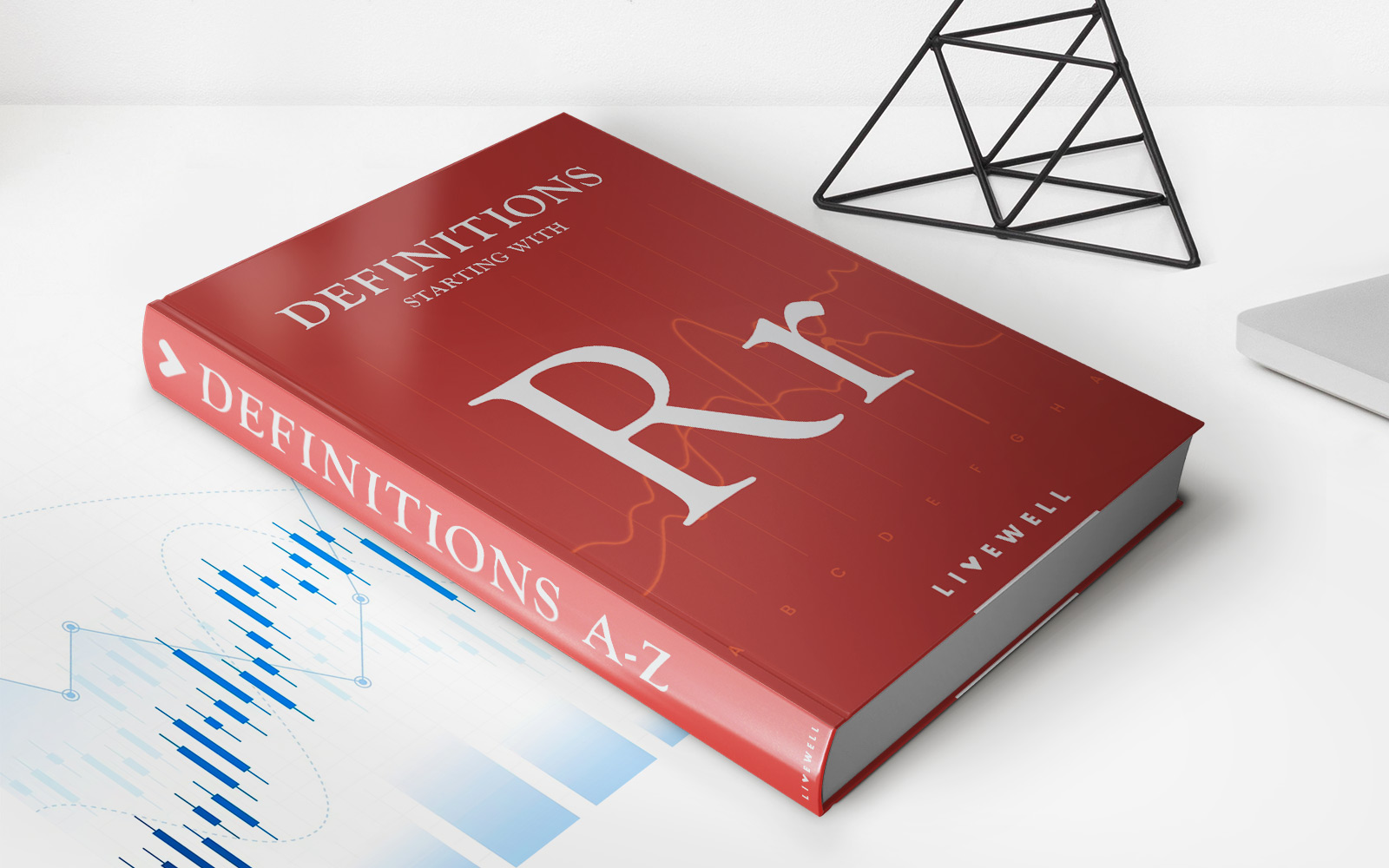

Finance
What Is Twisting In An Insurance?
Modified: February 21, 2024
Learn about twisting in insurance and its impact on your finances. Understand the risks involved and how to protect yourself in this complicated area of insurance planning.
(Many of the links in this article redirect to a specific reviewed product. Your purchase of these products through affiliate links helps to generate commission for LiveWell, at no extra cost. Learn more)
Table of Contents
Introduction
Insurance is an integral part of our lives, providing peace of mind and financial protection against unexpected events. When purchasing insurance, we rely on the expertise of insurance agents to guide us through the process and help us choose the policies that best suit our needs. However, there are instances where agents may engage in unethical practices that can be detrimental to policyholders. One such practice is known as “twisting.”
Twisting refers to the deceptive tactics used by insurance agents to convince policyholders to surrender their existing insurance policies and replace them with new ones. This often occurs without the policyholder fully understanding the implications of the new policy or the potential disadvantages of giving up their current coverage.
The motives behind twisting can vary, but they generally revolve around financial gain for the agent. By convincing individuals to switch policies, the agent can earn a higher commission or receive other incentives from the insurance company. Unfortunately, this can result in policyholders losing valuable benefits, paying higher premiums, or being left without adequate coverage for their specific needs.
As a consumer, it’s important to be aware of the concept of twisting and understand how to protect yourself from falling victim to these unethical practices. In this article, we will delve into the definition of twisting, provide examples of twisting in insurance, explore the risks and consequences it can have for policyholders, and offer tips on how to safeguard yourself and make informed decisions about your insurance policies.
Understanding Insurance Policies
Before delving into the concept of twisting, it is crucial to have a basic understanding of insurance policies. Insurance policies are contracts between the policyholder and the insurance company, outlining the terms, conditions, and coverage provided by the insurer. There are various types of insurance policies available, ranging from life insurance and health insurance to auto insurance and homeowners insurance.
Insurance policies are designed to protect individuals and businesses from financial loss due to unforeseen events. Policyholders pay regular premiums to the insurance company, who, in turn, agrees to compensate them for covered losses outlined in the policy. These losses can include property damage, medical expenses, liability claims, or even death benefits.
When purchasing an insurance policy, it’s essential to carefully review the terms and conditions to ensure the coverage aligns with your specific needs. Take the time to understand the limits of coverage, deductibles, exclusions, and any other pertinent details. Additionally, consider factors like the financial stability and reputation of the insurance company before making a commitment.
Insurance agents play a crucial role in the insurance purchasing process. They serve as intermediaries between the policyholder and the insurance company, providing information, guidance, and assisting in policy selection. Agents are expected to act in the best interests of their clients, ensuring they understand the policies they purchase.
Unfortunately, not all agents adhere to ethical standards, and some engage in practices like twisting, which can be misleading and detrimental to policyholders. Understanding the various types of insurance policies and how they work can help you navigate the insurance landscape and make informed decisions about your coverage.
Definition of Twisting in Insurance
Twisting in insurance refers to the unethical practice of persuading policyholders to surrender their current insurance policies and replace them with new policies that may not be in their best interests. Insurance agents engaging in twisting use deceptive tactics to convince policyholders that the new policies are superior or offer better benefits than their existing coverage.
This manipulation often involves misrepresenting key features of the new policy, such as overstating the benefits, downplaying the drawbacks, or misleadingly comparing it to the policyholder’s current coverage. Agents may use high-pressure sales techniques, targeting vulnerable individuals who may not fully understand the complexities of insurance contracts.
The intent behind twisting is usually financial gain for the agent. By convincing policyholders to switch policies, they can earn higher commissions or other incentives from the insurance company. The agent benefits while the policyholder may unknowingly lose valuable benefits, pay higher premiums, or face gaps in their coverage.
It’s important to note that not all policy replacements are considered twisting. Sometimes, policyholders genuinely find better coverage options or lower premiums that suit their needs. However, twisting occurs when the agent intentionally misleads or manipulates the policyholder for personal gain.
Regulatory bodies and insurance associations have strict guidelines and regulations in place to prevent twisting and protect policyholders. These guidelines typically require agents to provide honest and transparent information, act in their client’s best interests, and disclose any conflicts of interest.
By understanding the definition and implications of twisting, policyholders can better safeguard themselves from falling victim to unscrupulous practices and make informed decisions about their insurance coverage.
Examples of Twisting
To better grasp the concept of twisting in insurance, let’s explore some examples of how it can manifest in real-life scenarios:
- Exaggerating Policy Limitations: An agent may mislead a policyholder by downplaying the limitations of their current policy while exaggerating the benefits of a new one. For instance, they might claim that the new policy has higher coverage limits, when in reality, the difference is minimal or insignificant.
- Misrepresenting Premiums: Agents sometimes manipulate premium comparisons to make the new policy appear more affordable. They might fail to mention that the initial premium is lower but will increase significantly over time. Alternatively, they might understate the premium of the existing policy to make the new policy seem like a better financial choice.
- Failure to Disclose Surrender Charges: Policyholders may face surrender charges or penalties when they terminate their existing policy prematurely. Dishonest agents may fail to inform policyholders about these charges, leading them to unknowingly incur additional costs when switching policies.
- Misleading Claims about Better Benefits: Agents might make false or exaggerated claims about the additional benefits provided by the new policy, such as coverage for pre-existing conditions or improved claim settlement processes. These claims can give policyholders a false sense of security and prompt them to make uninformed decisions.
- Targeting Vulnerable Individuals: Agents may specifically target older adults or individuals with limited insurance knowledge who may be more susceptible to manipulation. These vulnerable individuals may not fully understand the complexities of insurance policies, making them easy targets for twisting practices.
These examples highlight the deceptive tactics employed by agents engaging in twisting. It’s vital for policyholders to be aware of these tactics and stay vigilant when approached by an agent advocating for policy replacements.
Risks and Consequences of Twisting
Engaging in twisting practices can have severe consequences for policyholders. It’s essential to understand the risks involved to make informed decisions about insurance policies. Here are some of the risks and consequences associated with twisting:
- Inadequate Coverage: Policyholders who fall victim to twisting may unknowingly give up important coverage benefits provided by their existing policies. This can leave them with inadequate coverage for their specific needs, leading to financial hardship in the event of a claim or loss.
- Higher Premiums: Twisting may result in policyholders paying higher premiums for their new policies. Agents may manipulate premium comparisons or fail to disclose long-term premium increases, causing policyholders to bear the financial burden of inflated costs.
- Loss of Policy Benefits: Some insurance policies have unique features and benefits that may not be available in newer policies. By surrendering their existing policies due to twisting, policyholders risk losing valuable benefits like cash value accumulation, guaranteed renewability, or specific coverage for critical illnesses or injuries.
- Underwriting Challenges: Policyholders who frequently switch policies due to twisting practices may face difficulties in the underwriting process. Insurance companies may view policyholders who frequently change their coverage as higher-risk applicants, potentially leading to higher premiums or even denial of coverage.
- Financial Loss: Twisting can result in significant financial loss for policyholders. Surrender charges or penalties associated with terminating existing policies prematurely can eat into the policyholder’s savings, eroding the potential benefits of the new policy.
- Damaged Trust in Insurance Industry: Twisting not only harms individuals but also erodes consumer trust in the insurance industry as a whole. Instances of twisting can create skepticism and apprehension among potential policyholders, making it more challenging for them to trust agents and insurance companies.
Understanding the risks and consequences of twisting is crucial in safeguarding your best interests as a policyholder. By being aware of the potential pitfalls, you can protect yourself and make well-informed decisions about your insurance coverage.
How to Protect Yourself from Twisting
Protecting yourself from twisting practices requires awareness, knowledge, and a proactive approach when dealing with insurance agents. Here are some essential strategies to help safeguard yourself from falling victim to twisting:
- Educate Yourself: Take the time to familiarize yourself with the basics of insurance policies. Understand the terms, coverage options, and common insurance practices. This knowledge will empower you to ask the right questions and discern valid offers from deceptive ones.
- Research: Before entering into any insurance agreement, thoroughly research the insurance company and agent you are dealing with. Check their credentials, licensing, reputation, and any disciplinary history. Look for reviews and testimonials from other policyholders to gauge their trustworthiness and professionalism.
- Read Policies Carefully: Go through the terms and conditions of your current policy and any new policy offers. Understand the coverage, limitations, exclusions, and premium structures. Pay attention to any surrender charges or penalties associated with terminating your existing policy.
- Compare Policies: If a new policy is being presented to you, compare it objectively with your current coverage. Take note of the benefits, premiums, and features of both policies. Consult with an independent insurance expert if needed to assess whether the new policy truly offers an improvement over your existing coverage.
- Ask Questions: Don’t hesitate to ask your insurance agent specific questions about any policy recommendations or comparisons. Seek clarification on any points that seem unclear or misleading. A trustworthy agent should be willing to provide transparent and honest answers to address your concerns.
- Consult an Independent Advisor: Consider seeking advice from an independent insurance advisor who is not affiliated with any specific insurance company. They can provide unbiased insights and help you navigate the complexities of insurance policies, ensuring you make informed decisions based on your unique needs.
- Report Suspected Twisting: If you suspect that you have been a victim of twisting, report the incident to the appropriate authorities or regulatory bodies. Provide detailed information and any evidence you may have. Your report can help protect other individuals from falling prey to similar unethical practices.
Remember, protecting yourself from twisting practices requires vigilance, thoroughness, and skepticism. Stay informed, ask questions, and trust your instincts when it comes to insurance decisions. By being proactive, you can reduce the chances of falling victim to twisting and ensure that your insurance coverage remains in your best interest.
Conclusion
Twisting in insurance is an unethical practice that can have detrimental effects on policyholders. It involves agents persuading individuals to replace their existing insurance policies with new ones, often without fully disclosing the potential drawbacks or implications of the switch.
Understanding insurance policies, being aware of the definition of twisting, and recognizing the risks and consequences associated with it is crucial for policyholders. By educating yourself and conducting thorough research, you can protect yourself from falling victim to these deceptive tactics.
To safeguard yourself from twisting, it is important to read policies carefully, ask questions, and compare coverage options objectively. Consulting with an independent insurance advisor can provide additional guidance and ensure you make informed decisions based on your specific needs.
By following these strategies, you can protect yourself from inadequate coverage, higher premiums, and financial loss. Additionally, reporting suspected twisting incidents helps prevent others from becoming victims and contributes to maintaining integrity in the insurance industry.
Remember, as a policyholder, you have the right to be fully informed and make choices that align with your best interests. By staying vigilant and informed, you can navigate the insurance landscape confidently and ensure that your insurance coverage truly meets your needs.














